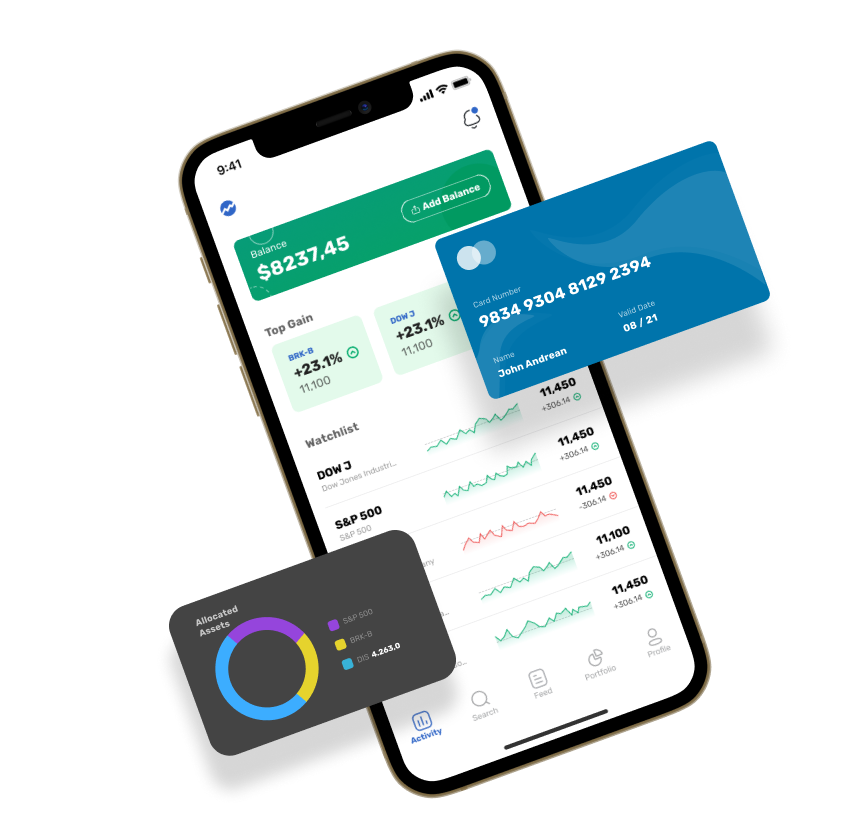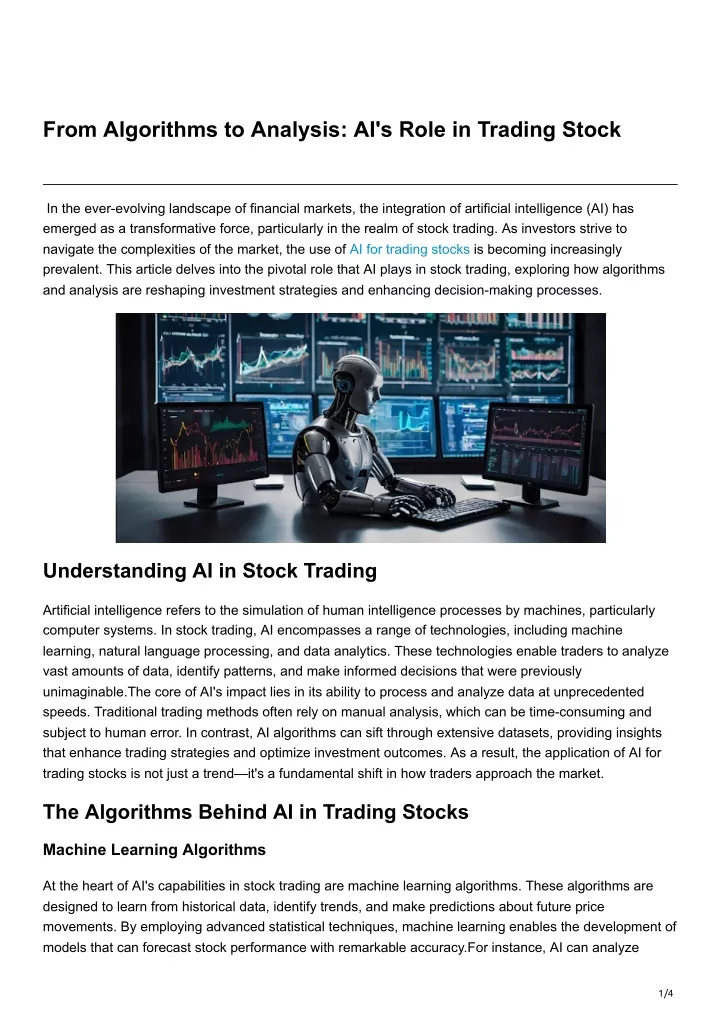20 Top Suggestions To Picking AI Stock Predictions Analysis Websites
Wiki Article
Top 10 Tips For Evaluating The Cost And Cost Of Ai Stock Predicting/Analyzing Trading Platforms
Analyzing the costs and prices of AI software for predicting and analyzing stocks is essential to ensure that you are getting the most value from your investment without incurring hidden costs or unanticipated expenses. Pricing structures can vary greatly and it is essential to be aware of what you're getting for the amount you pay. Here are the top 10 methods to evaluate the pricing and cost of these platforms.
1. Learn more about the pricing structure
Subscription-based: Find out whether the platform has an annual or monthly cost and what features are available in each tier.
Pay-per - use: Verify the platform's charges are based on usage, like the number of transactions (or request for data) or forecast.
Freemium Model: Look to see if the platform offers a free version which offers the most basic features. Premium features are charged for.
2. Compare Pricing Tiers
Features breakdown: Check out what features are offered in each pricing level (e.g. basic, professional, enterprise).
Scalability: Make sure the price tiers are aligned to your requirements.
Upgrade flexibility - Examine to see if there are options to easily upgrade or downgrade it if your requirements alter.
3. Evaluate Hidden Costs
Data charges. Check if the platform charges fees to access premium data.
Brokerage fees: Check if the platform charges additional costs for execution of trades or integration with brokers.
API use. Assess if extra charges are incurred due to API access, or frequent API usage.
4. Test out free demos and trials
Trial period: Test platforms that give you a no-cost demo or trial to try their features.
Be sure to check the limitations of the free trial. It may not have all the features.
No-commitment option: If you don't like the platform, you can end the subscription at no cost.
5. Look for discounts and promotions.
Annual discounts: See if you can get an annual discount plan when compared to monthly plans.
Referral programs: Check if the platform provides discounts or credit for referring other users.
Bulk or Institutional Pricing If your company is large then you might want to ask about bulk and institutional pricing.
6. Calculate Return on investment
Cost vs. Value: Determine whether the functions and projections of the platform justify its price. For instance, will it assist you in making better trade decisions or save time?
Track record of performance - Study the platform's success rate or user feedback to determine its potential return on investment.
Alternative costs: Compare the platform's cost against the costs of not using the platform (e.g. missed opportunities, time spent manual analysis).
Review Cancellation Policies
The cancellation policy should be followed: Ensure that you can cancel the subscription without penalty or fees.
Review the refund policy to see whether you are eligible for an amount of money back for any unused subscription portions.
Auto-renewal. Check whether the platform automatically renews your subscription. If so then you'll have to figure out how to optout.
8. Price transparency is essential.
Price page that is clear Make sure that your platform provides a thorough and precise pricing page with no hidden charges.
Support for customers: Contact customer support to provide clarification on any pricing issues or additional costs.
Contract Terms: Read the terms of service for any long-term agreements or penalties.
9. Compare to Competitors
Comparing features: Make sure you are getting the best value and the best platform when comparing it to its rivals.
User reviews: Read reviews from users to determine whether others think that the platform is worth the cost.
Review the market position of the platform. Does it match your needs?
10. Calculate Long-Term Costs
Price increases: Find out if and when the platform raises its prices.
Feature additions - Determine whether new features come with your current plan, or if an upgrade is required.
Scalability costs - Make sure that the cost of your platform is reasonable even as the volume of your transactions or data requirements increase.
Bonus Tips
Test out a variety of platforms. Try them all out with a no-cost trial to see how they perform.
Negotiate the price: If you are a frequent user or a part of a large organization Ask for discounts or special pricing.
Find educational resources on the internet Certain platforms provide tools or resources for education that are free that add value over the core features of their platform.
The following tips can help you evaluate the pricing and costs of AI analysis and stock prediction platforms. It is possible to pick one that is suitable for your budget and provides the features you require. A reasonable price for a platform should be able to combine the affordability of the platform with its features. This will enable you to get the most out of your trading. Have a look at the top rated market ai recommendations for more advice including market ai, stock ai, ai for trading, ai stock market, options ai, ai chart analysis, best ai trading app, ai investing platform, investment ai, ai investing and more.

Top 10 Tips To Assess The Scalability Ai Technology For Predicting And Analyzing Trading Platforms
To ensure that AI-driven trading platforms and prediction systems are able to handle the growing amount of user input, data and market complexity, it is vital to determine their capacity. These are the top 10 ways to determine the scalability of AI-driven stock prediction and trading platforms.
1. Evaluate Data Handling Capacity
Check to see if your platform is able to analyze and process large datasets.
Reason: Scalable platforms are required to be able to handle growing volumes of data without performance degradation.
2. Test the capabilities of a Real-Time Processor
Tips: Check how the platform handles live data streams, like live stock prices, or breaking news.
The reason: The importance of real-time analysis is for trading decisions, and delays could result in missed opportunities.
3. Cloud Infrastructure Elasticity and Check
Tips: Find out if the platform uses cloud-based infrastructure (e.g., AWS, Google Cloud, Azure) and has the ability to scale resources in a dynamic manner.
Cloud platforms provide flexibility. The system can be scaled up or down according to the demand.
4. Algorithm Efficiency
Tip: Check the computational efficiency and the accuracy of AI models to make predictions.
Reason: Complex algorithmic structures can be resource-intensive. Making them more efficient is the key to scaling.
5. Learn about Parallel Processing and Distributed Computer Systems
Tips: Check if the platform uses parallel processing frameworks or distributed computing frameworks.
The reason: These technologies enable faster data processing and analytics across many nodes.
6. Review API Integration and Interoperability
TIP : Make sure your platform integrates with other APIs like brokers and market data providers. APIs.
The reason: seamless platform integration makes sure it is able to adjust to new data sources or trading environment.
7. Analyze User Load Handling
Utilize a high-traffic simulator to test how the platform reacts under pressure.
What's the reason? A platform that is scalable has to maintain its performance when users grow.
8. Study the Model Retraining adaptability
TIP: Assess how frequently and efficiently AI models are being trained with the help of new data.
Why? Markets are constantly changing, and models have to adapt quickly in order to remain precise.
9. Check Fault Tolerance (Fault Tolerance) and Redundancy
Tip: Check that the platform has failover mechanisms, and has redundancy in the event of software or hardware malfunctions.
Why is that downtime in trading is costly, which is why fault tolerance is crucial to ensure the scalability.
10. Monitor Cost Efficiency
Analyze your platform's cost, including the cloud resources, storage and computation power.
Why is it important to keep a balanced equilibrium between the performance costs and expenses.
Bonus tip Future-proofing
Make sure the platform can adjust to changes in regulations and incorporates new technologies, like quantum computing, or even advanced NLP.
These factors can help you assess the impact of AI-based stock prediction as well as trading platforms. They'll also make sure they're robust efficient, reliable capable of expansion and future-proof. See the most popular best ai stocks to buy now for more recommendations including free ai tool for stock market india, best ai for stock trading, ai for trading stocks, best ai penny stocks, free ai stock picker, ai for trading stocks, can ai predict stock market, best stock prediction website, best ai for stock trading, ai in stock market and more.
